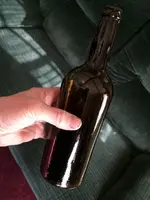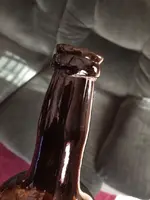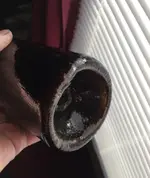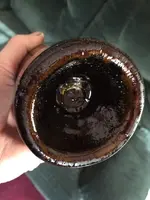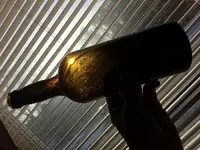undertaker
Hero Member
- Joined
- May 26, 2006
- Messages
- 562
- Reaction score
- 337
- Golden Thread
- 0
- Location
- Green Mountains of Vermont
- Detector(s) used
- Garrett Ace 250 and Whites Bullseye II Pinpointer
- #1
Thread Owner
Picked up this dark blackglass bottle recently. At first glance I thought it was a whiskey cylinder type bottle but then noticed the kick up base which made me think wine. Does anyone have a idea where this bottle was made and the time period? String lip and open pontil makes me think dutch although it doesn't have that long neck that you would see in a dutch bottle.



